Wisconsin: a hunter’s dreamland! Imagine vast forests painted with autumn leaves, calm lakes reflecting the blue skies, and fields stretching to the horizon. From the stealthy white-tailed deer hiding in the shadows to the majestic wild turkey strutting through open meadows, Wisconsin is a treasure trove for hunting enthusiasts. Whether you’re a seasoned hunter or just starting out, the Badger State welcomes you with open arms and promises adventures that will make lifelong memories.
In this detailed guide, we have covered all you need to know about hunting in Wisconsin. We have gathered all the information about hunting seasons, game species, the best places to hunt them, and hunting licenses. So, let’s get started.
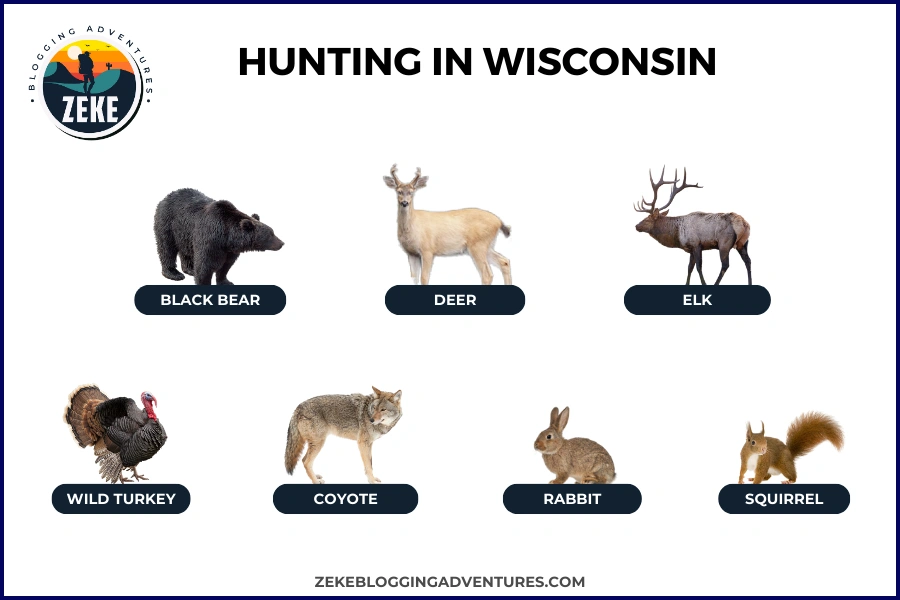
What Can You Hunt in Wisconsin?
Deer, elk, turkey, bear, and waterfowl like ducks and geese are just a few of many popular animals that can be hunted here — but don’t forget about small game such as rabbits, squirrels, grouse, quail, or pheasants! Trappers will also find an abundance of beavers, muskrats, and minks awaiting them out in nature.
Deer
Wisconsin is home to an abundance of deer (over 1.6 million!), and it’s no surprise that the state ranks as one of the top hunting destinations in America. From the Driftless Region’s rolling hills to the Northwood’s dense forests, there are plenty of places for you to spot your trophy buck.
Bowhunting has become a popular pastime here – with its long season running from September through January, there’s ample opportunity for hunters seeking bragging rights over their prize catch. If you prefer rifles though, don’t fret: There’s also a shorter gun season in November that draws thousands upon thousands of participants each year.
One thing all Wisconsin hunters should keep in mind is conservation and management when out stalking deer. The Wisconsin Department of Natural Resources (DNR) enforces strict regulations such as issuing tags and antler restrictions which help ensure our wildlife population remains healthy for future generations to enjoy too.
So if you’re looking forward to an outdoor hunting adventure this fall or winter, make sure you do your part by obtaining licenses, practicing ethical hunting practices and sticking within bag limits set by DNR rules!
Deer Season Wisconsin
| Season | Dates |
| Archery & Crossbow | Sep 16 – Jan 07 |
| Archery & Crossbow (Specific Regions) | Sep 16 – Jan 31 |
| Gun | Nov 18 – Nov 26 |
| Muzzleloader | Nov 27 – Dec 06 |
| Youth Hunt | Oct 07 – Oct 08 |
| Gun Hunt for disabled persons (Specific Regions) | Oct 07 – Oct 15 |
| December 4-Day Hunt ( Antlerless-Only) | Dec 07 – Dec 10 |
| Holiday Hunt (Antlerless-Only) | Dec 24 – Jan 01 |
Elk
At one time, Wisconsin’s elk population was on the brink of extinction. But thanks to successful conservation efforts, these magnificent creatures now roam freely throughout our state’s hills and forests. Watching a herd graze peacefully in its natural habitat is truly an awe-inspiring experience.
The peak season for elk hunting in Wisconsin is during the rutting period from late August through early October. During this time, males become more active and vocal as they compete for mating rights with females – making it much easier for hunters to locate them and increase their chances of success!
What really sets Wisconsin apart from other states when it comes to elk hunting is its limited tag system lottery drawings. This ensures that only a certain number of tags will be issued each year – guaranteeing sustainable management practices that ultimately guarantee game quality too! So if you’re lucky enough to get your hands on an elk tag here, prepare yourself for an unforgettable hunt ahead.
Elk Season Wisconsin
| Season | Dates |
| Elk | Oct 14 – Nov 12, Dec 14 – Dec 22 |
Black Bear
First, let’s clear up a few misconceptions about black bears. Contrary to their name, these majestic creatures can come in many colors – from chocolate brown to cinnamon to even blonde! You might think they’re aggressive but you’d be wrong – in reality, they prefer to avoid humans if given the chance.
Now that we’ve gotten that out of the way – it’s time for what you came here for: hunting black bears in Wisconsin. The best season is fall when these animals are stocking up on food before hibernation; this makes them more visible and easier targets.
Baiting with doughnuts or pastries is one popular method since everyone knows how much bears love sweets. However, if hound tracking appeals more to your style then go ahead; just remember all regulations set forth by DNR first.
When heading out into the woods, make sure your gear’s ready – don’t forget a good rifle with enough stopping power plus camouflage clothing and scent control products (black bears have sharp noses). But most importantly: stay safe at all times! Hunting black bears can be an exciting experience but always respect nature and follow safety protocols carefully.
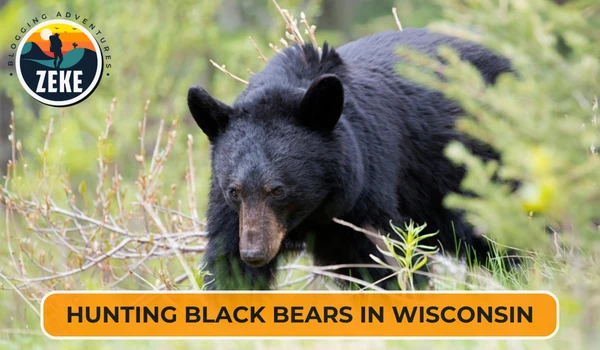
Bear Season
| Zones | Dates | Hunting Method |
| A, B, D (Dogs allowed) | Oct 04 – Oct 10 | Using bait, using legal methods without dogs |
| A, B, D (Dogs allowed) | Sep 13 – Oct 03 | with the help of dogs, bait allowed, and all legal methods |
| A, B, D (Dogs allowed) | Sep 06 – Sep 12 | with the assistance of dogs |
| C, E, F (Dogs now allowed) | Sep 06 – Oct 10 | Using bait, all legal methods without the help of dogs |
Wild Turkey
For Wisconsin hunters, wild turkey hunting is an unforgettable experience. With almost 350,000 of these majestic creatures roaming our forests and fields, the thrill of the hunt is only matched by the satisfaction when you finally take one down. The state offers a wealth of landscapes for exploration – from woodlands to prairies – with over 5 million acres of public land available for chasing after these elusive birds.
Hunting wild turkey isn’t just about adrenaline either; it requires skill and determination. Strict regulations mean that each bagged bird feels like a major accomplishment.
Turkey Season Wisconsin
| Season | Dates | Notes |
| Spring Turkey | Apr 17 – Apr 23 | Period A |
| Spring Turkey | Apr 24 – Apr 30 | Period B |
| Spring Turkey | May 01 – May 07 | Period C |
| Spring Turkey | May 08 – May 14 | Period D |
| Spring Turkey | May 15 – May 21 | Period E |
| Spring Turkey | May 22 – May 28 | Period F |
| Spring Youth Hunt | Apr 13 – Apr 14 | ——- |
| Fall Turkey | Sep 16 – Jan 07 | Zones 1-5 |
| Fall Turkey | Sep 16 – Nov 17 | Zones 6-7 |
Rabbit
Hunting rabbits in the Badger State requires careful timing and planning. The best time to go is during cooler months like fall or winter, as these critters become more active in the early morning and late evening hours.
Beagles are a popular choice for hunters due to their keen sense of smell – they can easily track down rabbits hiding within thick brush piles or dense thickets. It’s important to remember that food sources such as cornfields or clover patches will also be attractive spots for rabbit activity!
When it comes to gear, make sure you have a shotgun loaded with a smaller shot size (like #6 or 7 1/2) to increase your chances of hitting your target from farther away.
Also, wear camouflage clothing that won’t stand out against the surroundings while protecting yourself from thorns and other hazards along the way! With all this knowledge in hand, there’s no reason why your hunting in Wisconsin shouldn’t be successful!
Rabbit Season in Wisconsin
| Season | Dates |
| Northern Zone | Sep 16 – Feb 29 |
| Southern Zone | Oct 14 – Feb 29 |
| Milwaukee County | Jan 01 – Dec 31 |
Squirrel
Eastern gray squirrels are the most common species found throughout the state of Wisconsin – they’re known for their agility and fast movements so even seasoned hunters can find them challenging targets. But with careful observation and planning ahead, bagging one doesn’t have to be out of reach.
A .22 caliber rifle is generally preferred by many due to its power without causing too much damage to your catch, but if you’d like more difficulty, then a shotgun with smaller shot sizes works just fine too!
When stalking these critters, remember that early mornings or late afternoons are usually peak activity times while also staying downwind from your target since they have great sniffers. Make sure you wear blaze orange during firearm season for safety reasons – this will help prevent any accidents or harm coming your way while hunting.
Overall, practice caution when hunting squirrels in Wisconsin; but don’t let that scare away potential adventuresome spirits who want to give it a go! With some skillful scouting and good preparation, there’s no reason why anyone shouldn’t take home something furry at the end of the day.
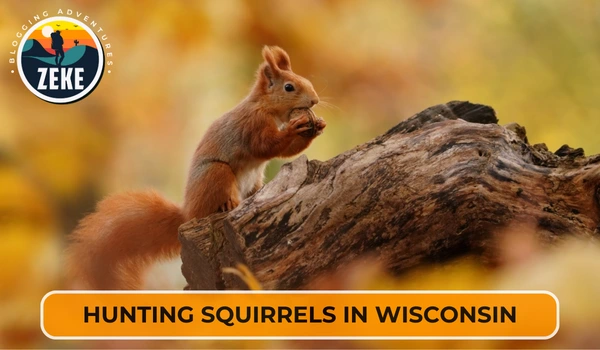
Squirrel Season WI
| Season | Dates |
| Gray & Fox Squirrel | Sep 16 – Feb 29 |
Coyote
Despite the centuries of hunting and trapping, coyotes have managed to thrive throughout North America – including right here in Wisconsin. It is estimated that there are over 50,000 coyotes living across the Badger state!
They can be found everywhere from rural areas to urban settings, making them a familiar sight for many people. But don’t let their population fool you, these crafty predators aren’t easy prey.
Coyotes are renowned for their intelligence and adaptability; they have an incredible sense of smell and excellent hearing, making sneaking up on them near impossible. Their fur also provides great camouflage in woodlands, making them masters of stealthiness.
But while hunting coyotes requires skill and determination, it’s more than just a thrilling sport: thanks to their tendency to prey on livestock or pets, they’re considered pests by many farmers or landowners, meaning hunting serves as both entertainment and population control!
So if you plan on going after one of these cunning creatures around Wisconsin, make sure you’ve got all the necessary permits before taking aim – breeding season (January-March) is when they’re most active so this would be your best bet.
Coyote Season WI
| Season | Dates |
| Hunting | Jan 01 – Dec 31 |
| Trapping | Oct 14 – Feb 15 |
Wolf Season
| Season | Dates |
| Hunting | Oct 15 – Feb 29 |
| Hunting with dogs | Nov 30 – Feb 29 |
Fox Season
| Season | Dates |
| Hunting | Oct 14 – Feb 15 |
| Trapping | Oct 14 – Feb 15 |
Bobcat Season
| Season | Dates |
| Hunting | Oct 14 – Dec 25, Dec 26 – Jan 31 |
| Trapping | Oct 15 – Dec 25, Dec 26 – Jan 31 |
Beaver Season
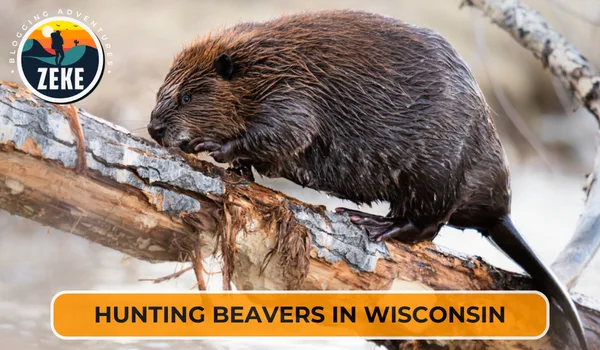
| Season | Dates |
| Zone A (Northwest) | Nov 04 – Apr 30 |
| Zone B (Northeast) | Nov 04 – Apr 30 |
| Zone C (South) | Nov 04 – Mar 31 |
| Zone D (Mississippi River) | Dec 06 – Mar 15 |
Mink Season
| Season | Dates |
| Northern Zone | Oct 21 – Apr 15 |
| Central Zone | Oct 28 – Mar 27 |
| Southern Zone | Nov 04 – Mar 15 |
| Mississippi River Zone | Nov 13 – Mar 10 |
Muskrat Season
| Season | Dates |
| Northern Zone | Oct 21 – Apr 15 |
| Central Zone | Oct 28 – Mar 27 |
| Southern Zone | Nov 04 – Mar 15 |
| Mississippi River Zone | Nov 13 – Mar 10 |
Otter Season
| Season | Dates |
| North Zone | Nov 04 – Apr 30 |
| South Zone | Nov 04 – Mar 31 |
Raccoon Season
| Season | Dates |
| Resident | Oct 14 – Feb 15 |
| Non-resident | Oct 28 – Feb 15 |
Fisher Season
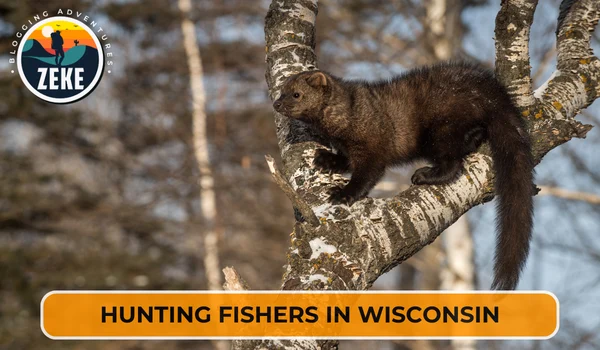
| Season | Dates |
| North & South Zones | Oct 14 – Jan 07 |
Opossum Season
| Season | Dates |
| Opossum | Jan 01 – Dec 31 |
Skunk Season
| Season | Dates |
| Skunk | Jan 01 – Dec 31 |
Weasel Season
| Season | Dates |
| Weasel | Jan 01 – Dec 31 |
Woodchuck Season
| Season | Dates |
| Woodchuck | Jan 01 – Dec 31 |
Porcupine Season
| Season | Dates |
| Porcupine | Jan 01 – Dec 31 |
Pheasant Season
| Season | Dates |
| Pheasant (Statewide) | Oct 14 – Jan 07 |
Grouse Season
| Season | Dates |
| Zone A | Sep 16 – Jan 07 |
| Zone B | Oct 14 – Dec 08 |
Partridge Season
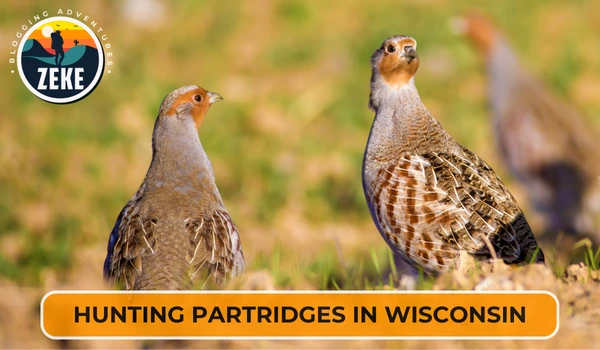
| Season | Dates |
| Hungarian Partridge | Oct 14 – Jan 07 |
Quail Season
| Season | Dates |
| Bobwhite Quail | Oct 14 – Dec 06 |
Dove Season
| Season | Dates |
| Mourning Dove | Sep 01 – Nov 29 |
Crow Season
| Season | Dates |
| Crow (Statewide) | Sep 16 – Nov 16, Jan 19 – Mar 20 |
Duck Season
| Season | Dates |
| Early Teal | Sep 01 – Sep 09 |
| Northern Duck Zone | Sep 23 – Nov 21 |
| Southern Duck Zone | Sep 23 – Oct 08, Oct 14 – Dec 03 |
| Open Water Duck Zone | Oct 14 – Dec 12 |
Coot & Merganser Season
| Season | Dates |
| Northern Zone | Sep 23 – Nov 21 |
| Southern Zone | Sep 23 – Oct 08, Oct 14 – Dec 03 |
| Open Water Zone | Oct 14 – Dec 12 |
Goose Season
| Season | Dates |
| Early Goose | 01 Sep – 15 Sep |
| Northern Goose Zone | 16 Sep – 16 Dec |
| Southern Goose Zone | 16 Sep – 08 Oct, 14 Oct – 03 Dec, 16 Dec – 02 Jan |
| Mississippi River Goose Zone | 16 Sep – 08 Oct, 14 Oct – 03 Dec, 16 Dec – 02 Jan |
Youth Waterfowl Season
| Season | Dates |
| Youth Waterfowl | Sep 16 – Sep 17 |
Rail Season
| Season | Dates |
| Sora & Virginia Rail | Sep 01 – Nov 09 |
Snipe Season
| Season | Dates |
| Snipe | Sep 01 – Nov 09 |
Woodcock Season
| Season | Dates |
| Woodcock | Sep 23 – Nov 06 |
Gallinule Season
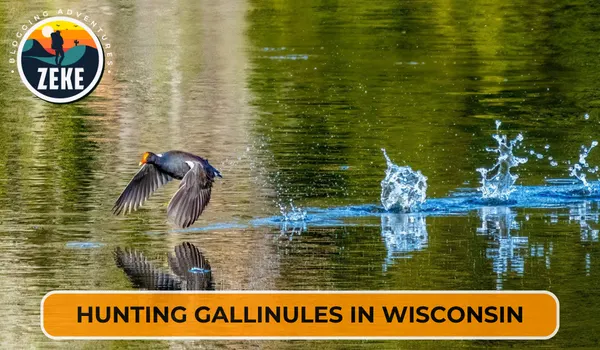
| Season | Dates |
| Common Gallinule | Sep 01 – Nov 09 |
Wisconsin Hunting License Information
Hunting in Wisconsin comes with rules and regulations, but don’t worry – the process of getting a license is fairly simple. Whether you’re a resident or non-resident, there are plenty of options to pick from!
For residents, there’s an annual license that covers all game species for one year; plus, if you prefer buying in bulk, then the three-year conservation patron license might be worth considering.
Non-residents can choose between an annual small game permit or a special deer gun season pass (valid only during specific dates). If you want to hunt something rarer like turkey or bear, then additional permits may be required.
Of course, having fun comes at a cost – fees apply depending on your residency status and chosen license type. Despite this expense though, it’s important to remember that every penny goes towards wildlife conservation efforts across the state!
It’s important to note that anyone born after January 1st, 1973 must first complete hunter education before purchasing any hunting licenses – classes can either be done online or attended physically.
Where Can You Hunt in Wisconsin?
Hunting in the Badger State is full of opportunity; from public lands such as state forests, wildlife areas, and county forests to private properties with Managed Forest Law (MFL).
If you’re looking for a great spot to hunt, the Chequamegon-Nicolet National Forest or one of the various state wildlife areas are fantastic places. However, when it comes to hunting on private land, always make sure you get permission first. With the Public Access Lands map provided by the state, finding MFL properties has never been easier.
Public Hunting Places in Wisconsin
Chequamegon–Nicolet National Forest
At over 1.5 million acres, the Chequamegon–Nicolet National Forest is a hunting paradise of diverse landscapes – from rolling hills to lush forests and glistening lakes. Home to an abundance of wildlife such as white-tailed deer, black bear, wild turkey, grouse, and more; there’s no shortage of game in this remote area with limited cell service – allowing for much-needed peace away from all the hustle and bustle. Plus, it has 800 miles of trails making it easy to find just about any spot you might want!
But beyond being a great hunting destination, there’s so much culture here too. This land holds centuries’ worth of history for Native American tribes who have lived here since time immemorial; remnants like ancient burial mounds and petroglyphs are scattered throughout the forest as reminders that we must respect what this area stands for: something greater than ourselves.
What makes us especially proud is the U.S. Forest Service whose careful management practices have helped increase populations – most notably the whitetail deer population which now stands at an estimated 200k! So if you’re looking for your next big trophy buck or hoping to come across a majestic black bear roaming freely through its natural habitat, then look no further than Chequamegon–Nicolet National Forest.
Brunet Island State Park
Located on an island in the Chippewa River, Brunet Island State Park is a paradise for outdoor enthusiasts. With over 1,200 acres of lush forests and open fields, it’s no wonder why hunters flock to this spot year after year. Boasting abundant wildlife like deer, turkeys, waterfowl, and even black bears – there are plenty of opportunities to bag your next trophy.
But what truly sets Brunet Island apart from other hunting grounds is its commitment to conservation and responsible hunting practices. The park strictly follows state regulations while encouraging hunters to do the same so that our beloved wildlife will remain healthy for generations to come.
So whether you prefer rifle or bow hunting in the woods or waterfowl along riverbanks – there’s something here for everyone! And if you’re feeling brave enough – hunt some bears too (just make sure you get all necessary permits beforehand).
Kinnickinnic State Park
Located in western Wisconsin, Kinnickinnic State Park is a nature lover’s dream. With over 1,200 acres of diverse terrain including rolling hills, wooded areas, and open fields it provides the perfect habitat for all kinds of game species like deer, turkey, pheasant, and waterfowl.
For those looking to hunt here, there’s plenty of public land available with designated hunting areas scattered throughout the park. Whether you prefer to set up a tree stand or stalk your prey on foot, you’ll find something that suits your style.
Safety is always the number one priority at Kinnickinnic State Park – make sure if planning a visit, get any necessary licenses beforehand as well as follow proper safety protocols when out in the field.
High Cliff State Park
High Cliff State Park is a haven for hunters located in eastern Wisconsin. Spanning over 1,100 acres of varied terrain, from rolling hills to dense forests – this park offers opportunities that novice or experienced hunters can take advantage of. Deer, turkey, pheasant, and waterfowl are all common game species found here; making it the perfect spot to hunt them down.
Deer hunting is particularly popular at High Cliff State Park with its healthy population of white-tailed deer roaming around. With proper licensing and permits, you can go on bow or gun hunts throughout both seasons.
If upland bird hunting is more your style, then you won’t be disappointed either as the diverse landscape provides an ideal habitat for pheasants and turkeys alike – plus there are designated areas specifically created just for them.
If ducks & geese are what you’re looking out for during their migration season, then Lake Winnebago will be your best bet; whether fishing by boat or setting up on land – success awaits!
Private Hunting Places in Wisconsin
Hunting on private lands in Wisconsin requires permission from the landowner – no exceptions. If you’re lucky, they might let you hunt for free, but some places may charge a fee. And always remember to ask each year because permissions can change!
The Managed Forest Law (MFL) program also offers an opportunity for public hunting on private lands with tax benefits as an incentive – however, it’s still important to check in with the owner first and show your appreciation for their generosity.
Rules should be followed diligently; trespassing without permission is illegal and disrespectful to both the land and its owner. So if you want to enjoy all that Wisconsin has to offer, make sure you get proper consent before heading out into the great outdoors!
